If your goal is to draw lines and images together, then your best bet for the money is to get rid of ImageIcon and JLabel and instead is to draw them all within a single paintComponent. The images can be drawn as image sprite, and the lines as lines by calling Graphics#drawLine(...) or as Line2D objects as you have using Graphics2D#draw(...)
For example, say we had two BufferedImage objects, upImg and dnImg, and two Point objects that determined the location of these sprites, upPt and dnPt
public class Foo01 extends JPanel {
// .....
private Point upPt = new Point(300, 100);
private Point dnPt = new Point(700, 650);
private BufferedImage upImg, dnImg;
And say we wanted to draw a line that connected the two image sprites, then these could all be draw within the paintComponent method like so:
@Override
protected void paintComponent(Graphics g) {
super.paintComponent(g); // tell the JPanel to do its house-keeping painting
// make sure that neither image is null
if (upImg != null && dnImg != null) {
// draw both images at their respective locations
g.drawImage(upImg, upPt.x, upPt.y, this);
g.drawImage(dnImg, dnPt.x, dnPt.y, this);
// to get a smooth line, use rendering hiints
Graphics2D g2 = (Graphics2D) g;
g2.setRenderingHint(RenderingHints.KEY_ANTIALIASING, RenderingHints.VALUE_ANTIALIAS_ON);
// to give the line some thickness
g2.setStroke(new BasicStroke(5f));
// calculate the end-points of the line
int x1 = upPt.x + upImg.getWidth() / 2;
int y1 = upPt.y + upImg.getHeight() / 2;
int x2 = dnPt.x + dnImg.getWidth() / 2;
int y2 = dnPt.y + dnImg.getHeight() / 2;
// and then draw it
g.drawLine(x1, y1, x2, y2);
}
}
Here is an example program that does just this -- draws two images with a line connecting. I've also added a MouseAdapter to allow the user to move the first image, the green up-arrow, showing that the line will move as well, since it is calculated within the painting method:

import java.awt.*;
import java.awt.event.*;
import javax.swing.*;
import java.net.URL;
import java.io.IOException;
import java.awt.image.BufferedImage;
import javax.imageio.ImageIO;
public class Foo01 extends JPanel {
private static final String UP_IMG_PATH = "https://upload.wikimedia.org/wikipedia/commons/7/7d/Green_circle_icon.jpg";
private static final String DN_IMG_PATH = "https://upload.wikimedia.org/wikipedia/commons/b/bc/Red_circle_icon.jpg";
private static final int GUI_W = 1000;
private static final int GUI_H = 800;
private Point upPt = new Point(300, 100);
private Point dnPt = new Point(700, 650);
private BufferedImage upImg, dnImg;
public Foo01() {
MyMouse myMouse = new MyMouse();
addMouseListener(myMouse);
addMouseMotionListener(myMouse);
setBackground(Color.WHITE);
try {
URL url = new URL(UP_IMG_PATH);
upImg = ImageIO.read(url);
url = new URL(DN_IMG_PATH);
dnImg = ImageIO.read(url);
} catch (IOException ioe) {
ioe.printStackTrace();
}
}
@Override
public Dimension getPreferredSize() {
return new Dimension(GUI_W, GUI_H);
}
@Override
protected void paintComponent(Graphics g) {
super.paintComponent(g);
if (upImg != null && dnImg != null) {
g.drawImage(upImg, upPt.x, upPt.y, this);
g.drawImage(dnImg, dnPt.x, dnPt.y, this);
Graphics2D g2 = (Graphics2D) g;
g2.setRenderingHint(RenderingHints.KEY_ANTIALIASING, RenderingHints.VALUE_ANTIALIAS_ON);
g2.setStroke(new BasicStroke(5f));
int x1 = upPt.x + upImg.getWidth() / 2;
int y1 = upPt.y + upImg.getHeight() / 2;
int x2 = dnPt.x + dnImg.getWidth() / 2;
int y2 = dnPt.y + dnImg.getHeight() / 2;
g.drawLine(x1, y1, x2, y2);
}
}
private class MyMouse extends MouseAdapter {
private Point p1 = null;
@Override
public void mousePressed(MouseEvent e) {
if (e.getX() < upPt.x || e.getX() > upPt.x + upImg.getWidth()) {
return;
}
if (e.getY() < upPt.y || e.getY() > upPt.y + upImg.getHeight()) {
return;
}
p1 = new Point(e.getX(), e.getY());
}
@Override
public void mouseReleased(MouseEvent e) {
if (p1 != null) {
moveSprite(e);
p1 = null;
}
}
@Override
public void mouseDragged(MouseEvent e) {
if (p1 != null) {
moveSprite(e);
}
}
private void moveSprite(MouseEvent e) {
Point p2 = new Point(e.getX(), e.getY());
int x = upPt.x + p2.x - p1.x;
int y = upPt.y + p2.y - p1.y;
upPt = new Point(x, y);
p1 = p2;
repaint();
}
}
public static void main(String[] args) {
SwingUtilities.invokeLater(()-> {
Foo01 foo01 = new Foo01();
JFrame frame = new JFrame("Draw Sprites");
frame.setDefaultCloseOperation(JFrame.EXIT_ON_CLOSE);
frame.add(foo01);
frame.pack();
frame.setLocationRelativeTo(null);
frame.setVisible(true);
});
}
}


